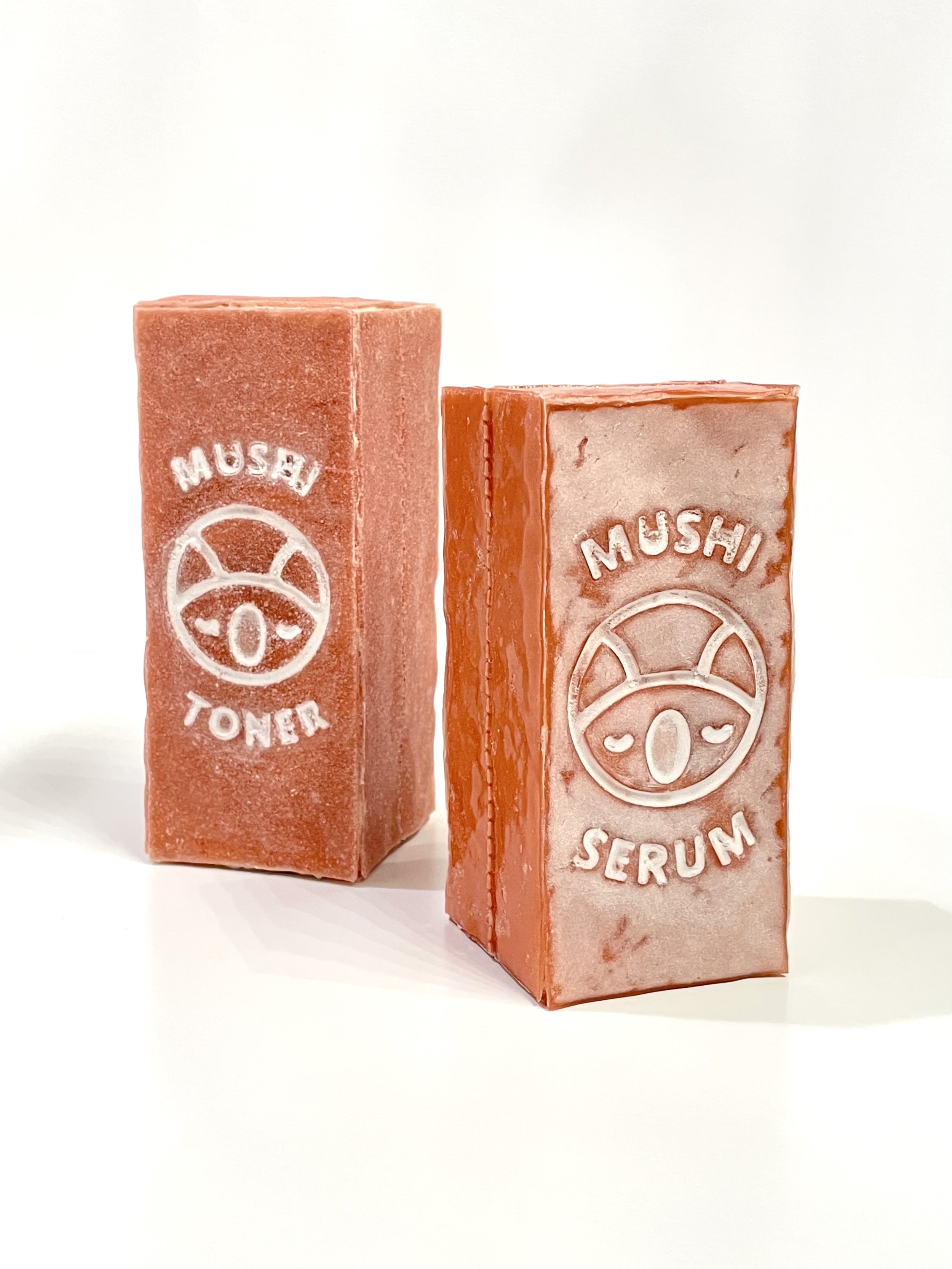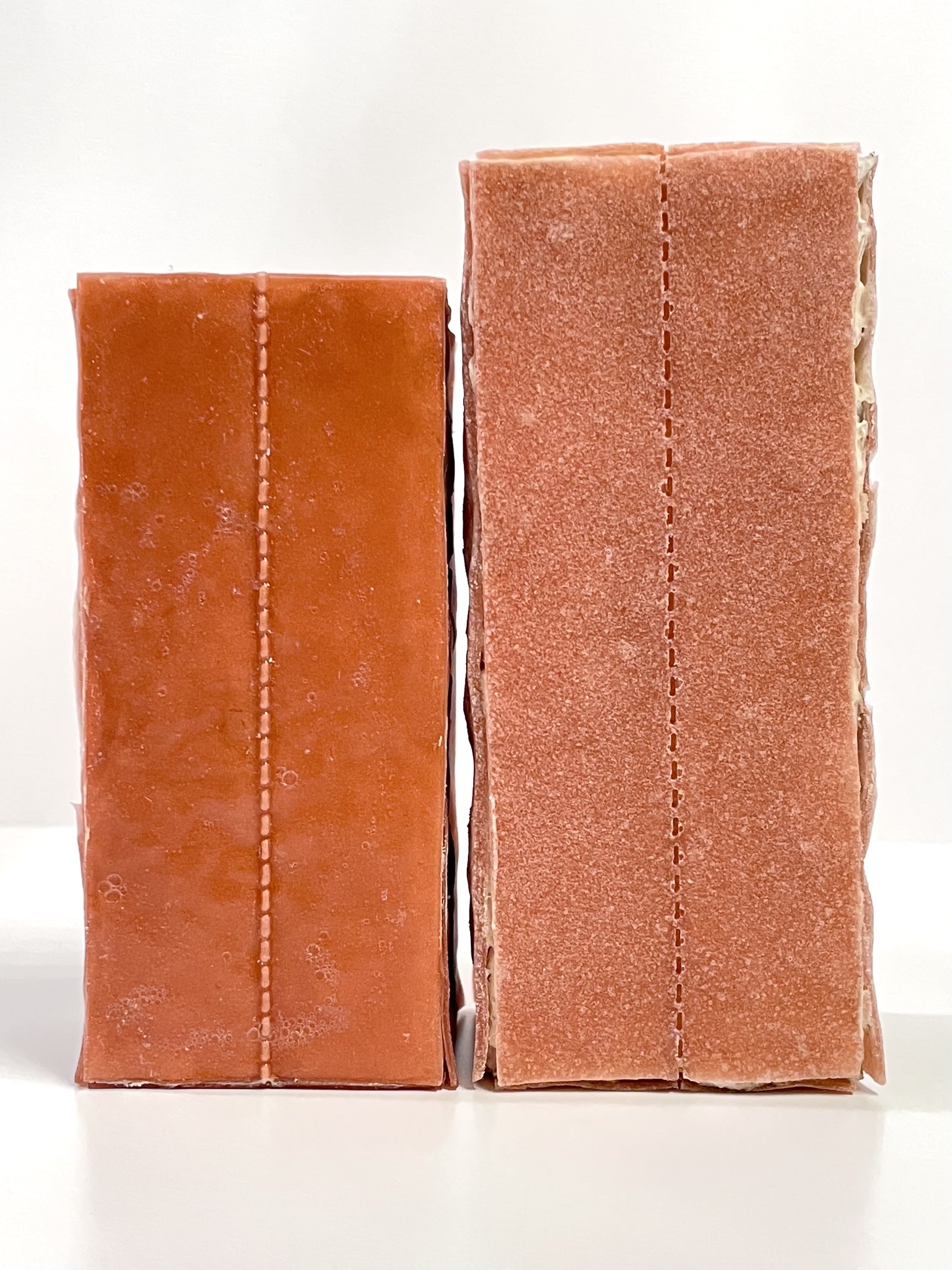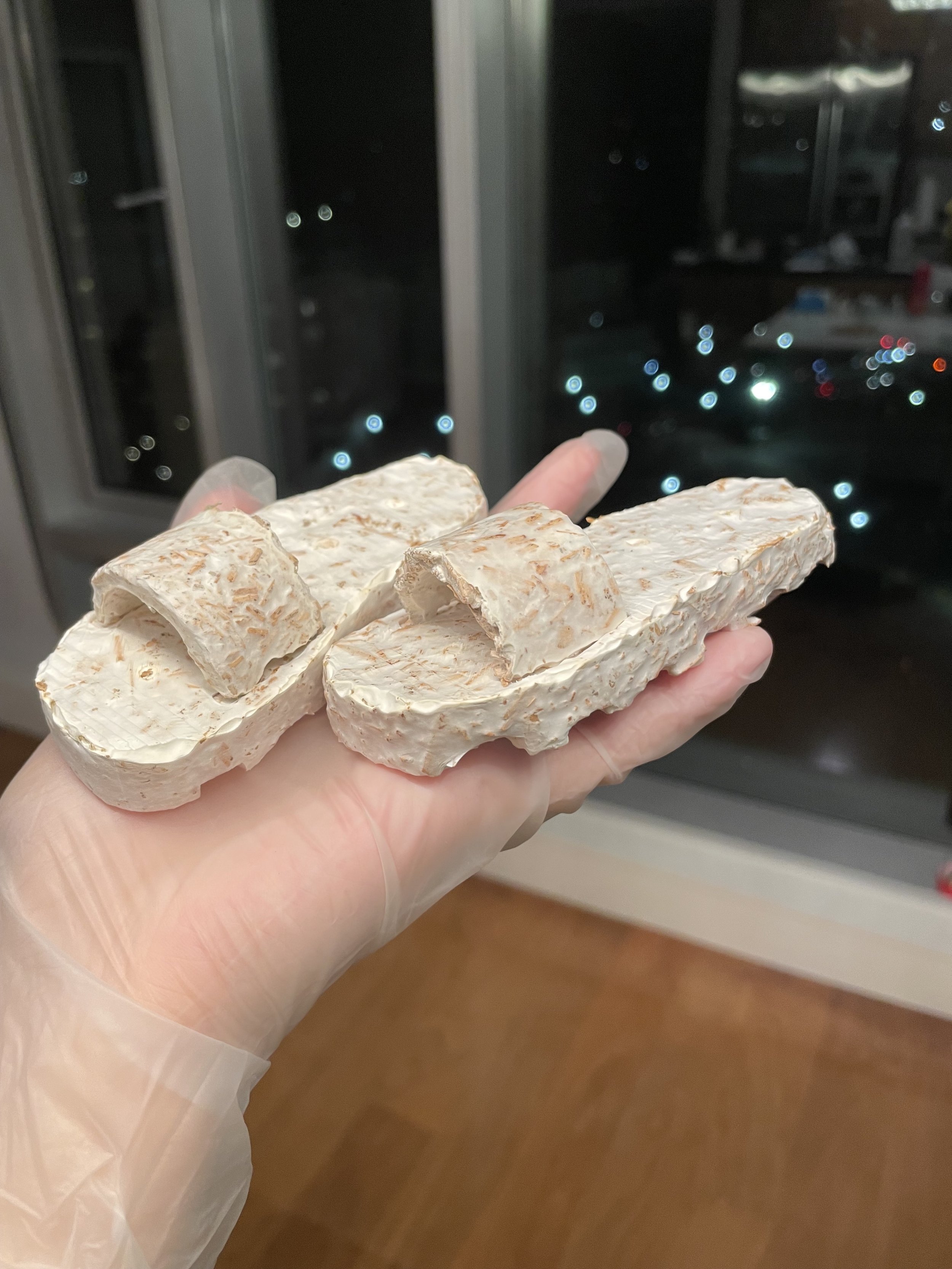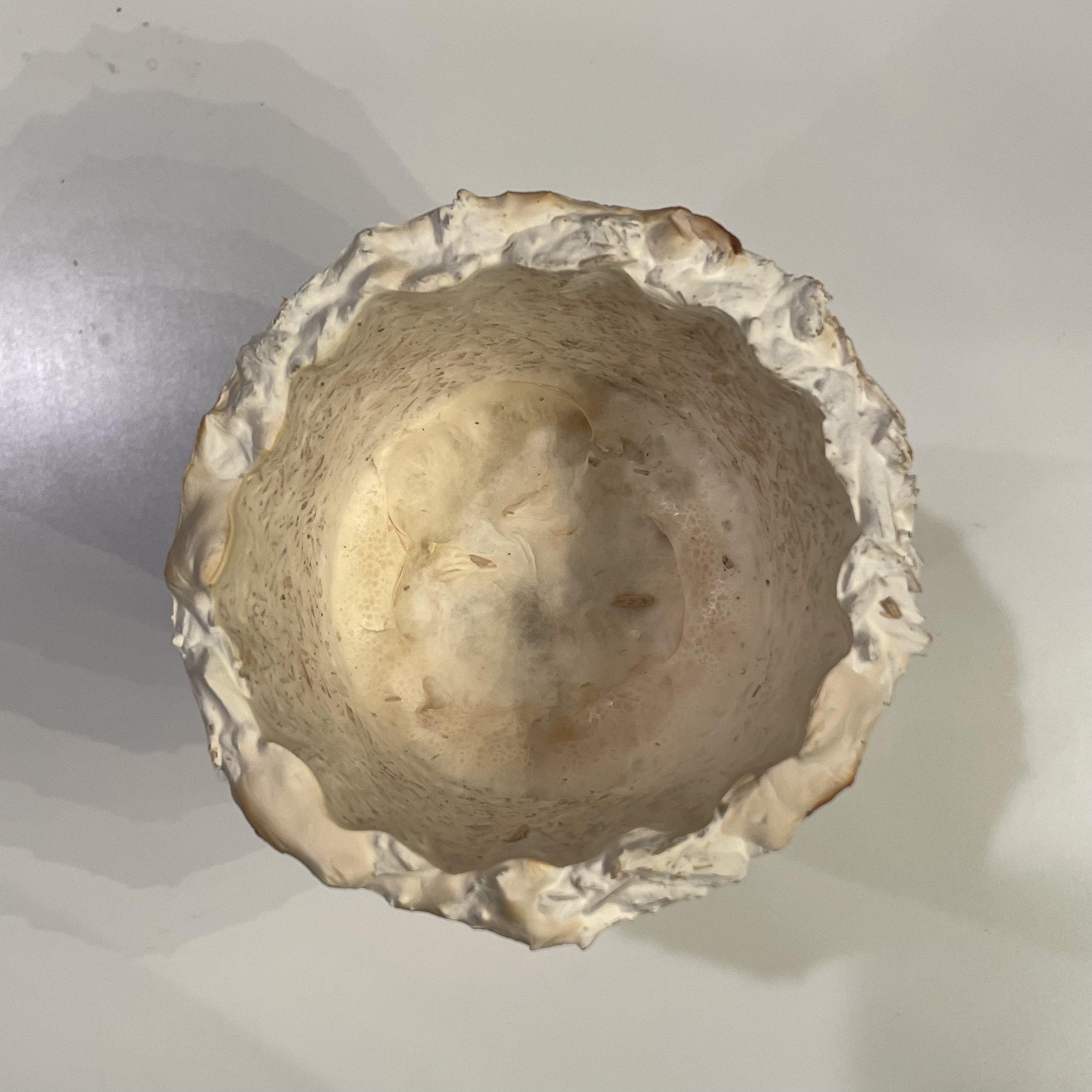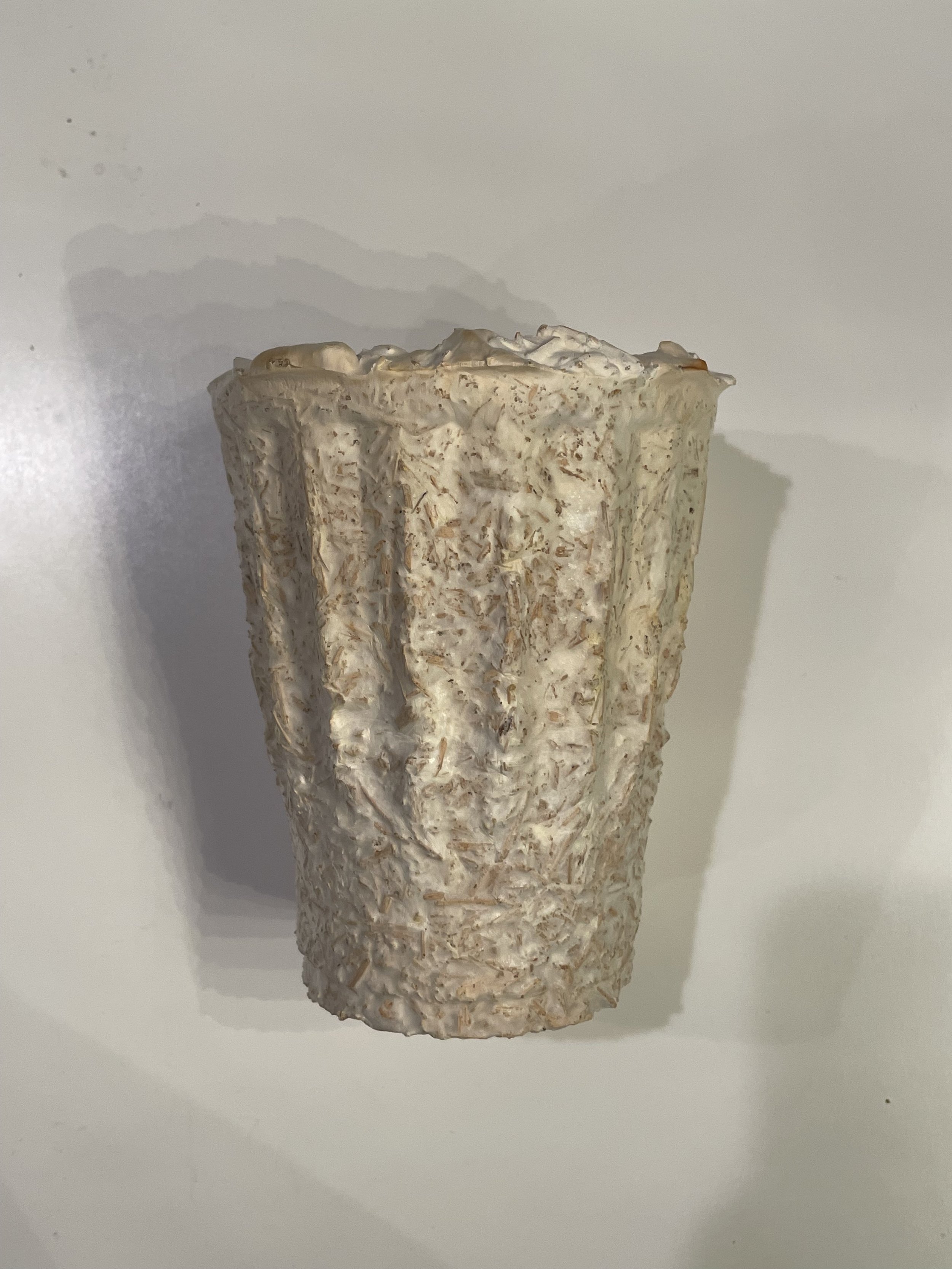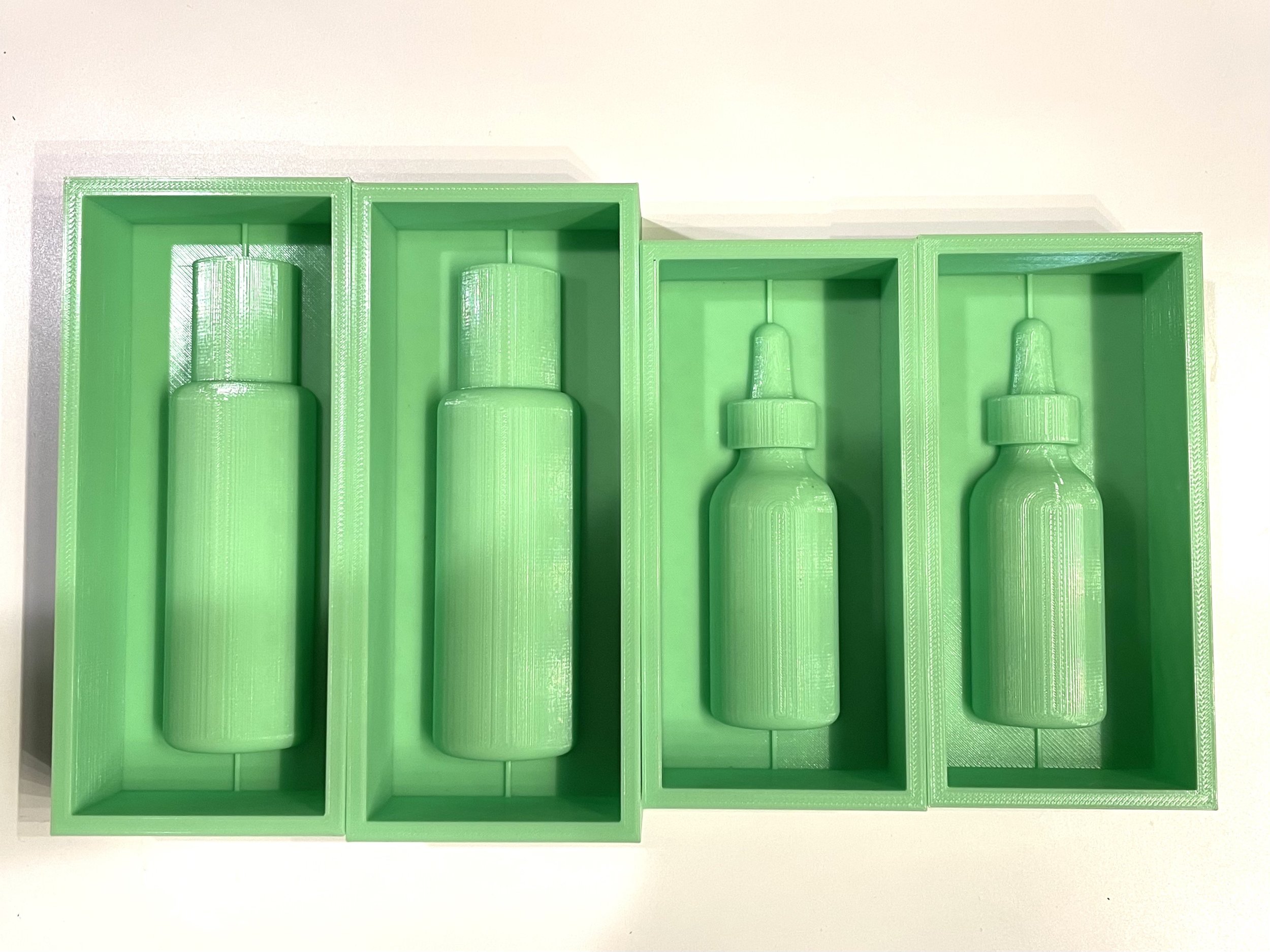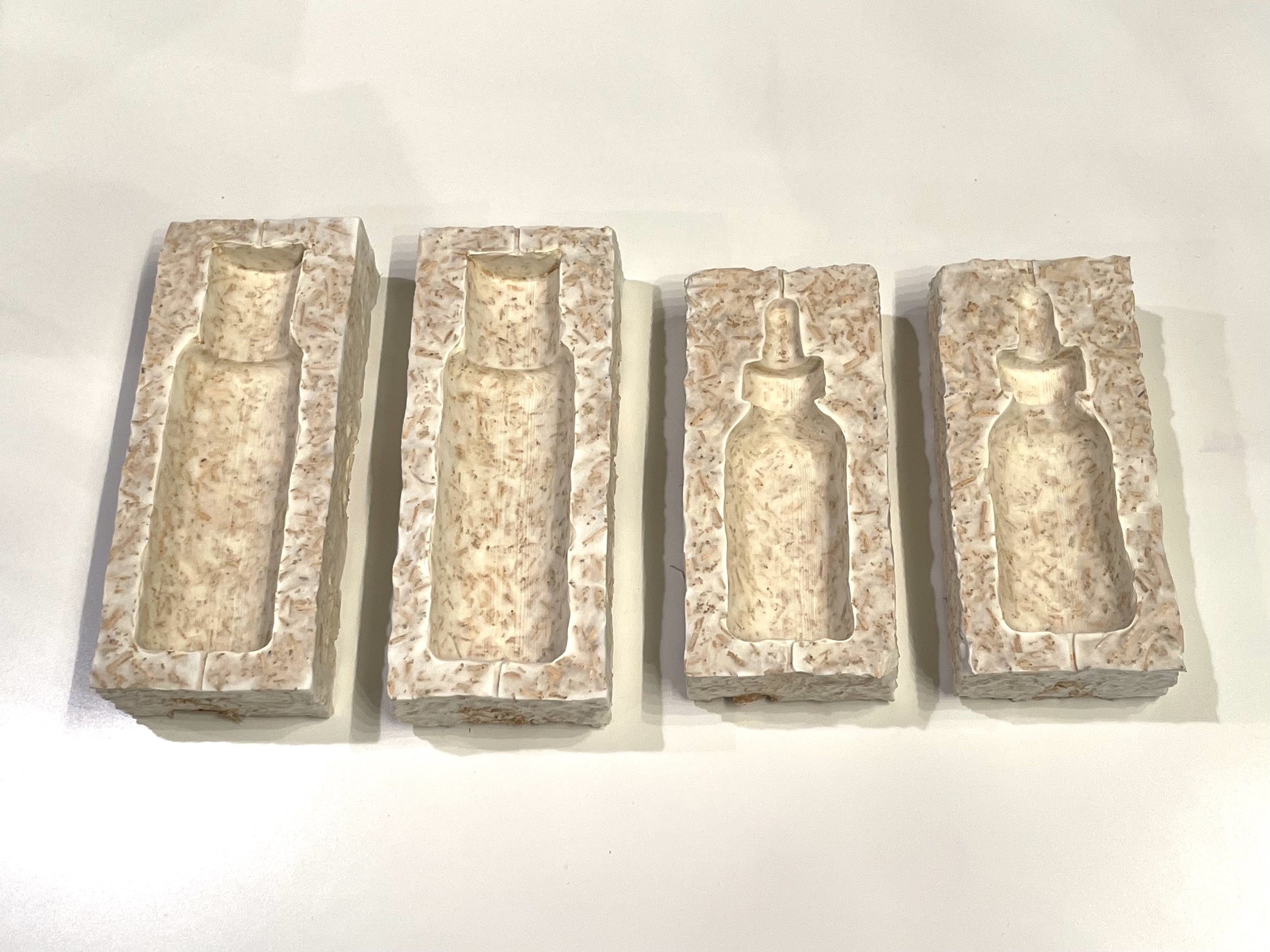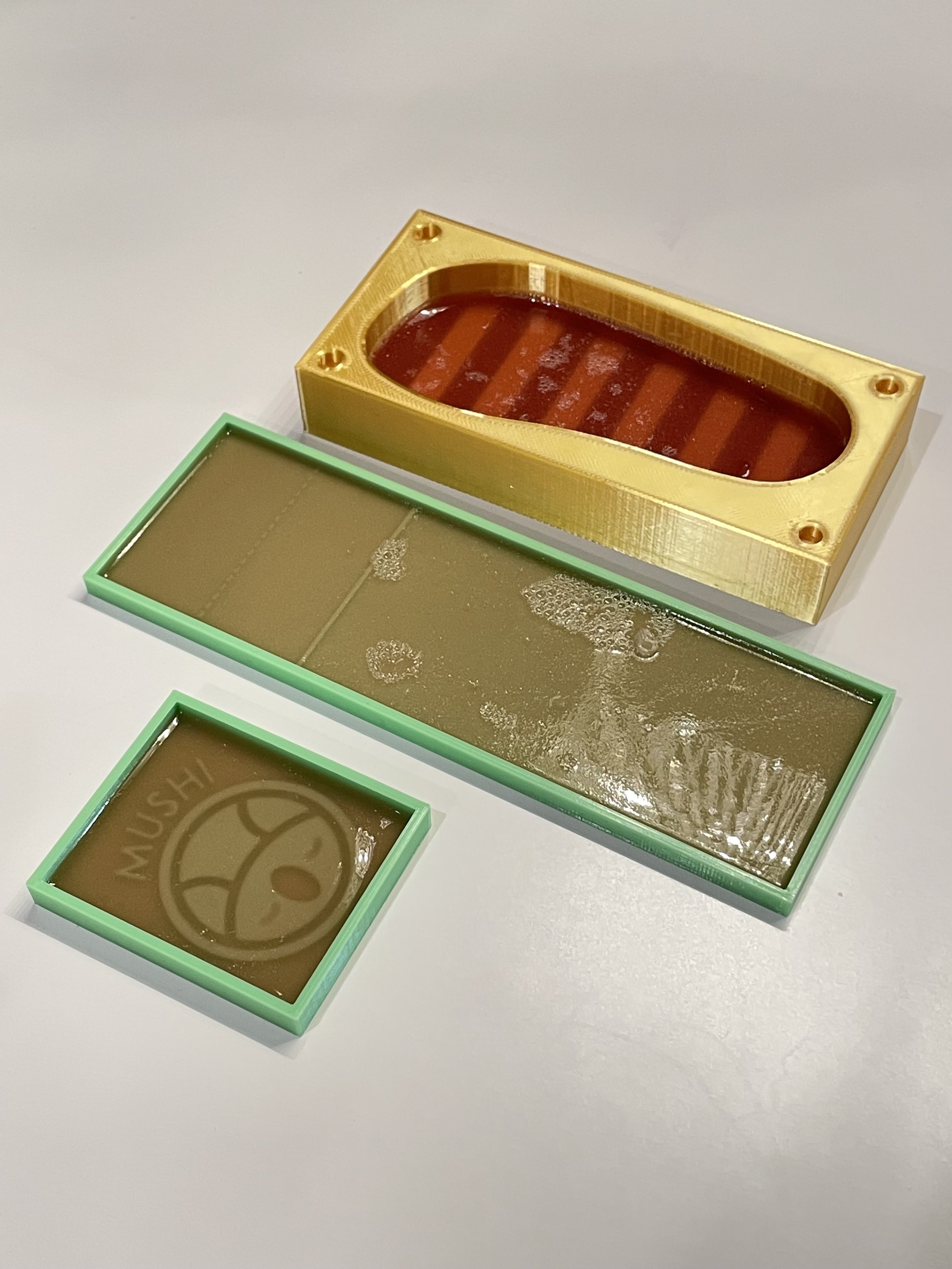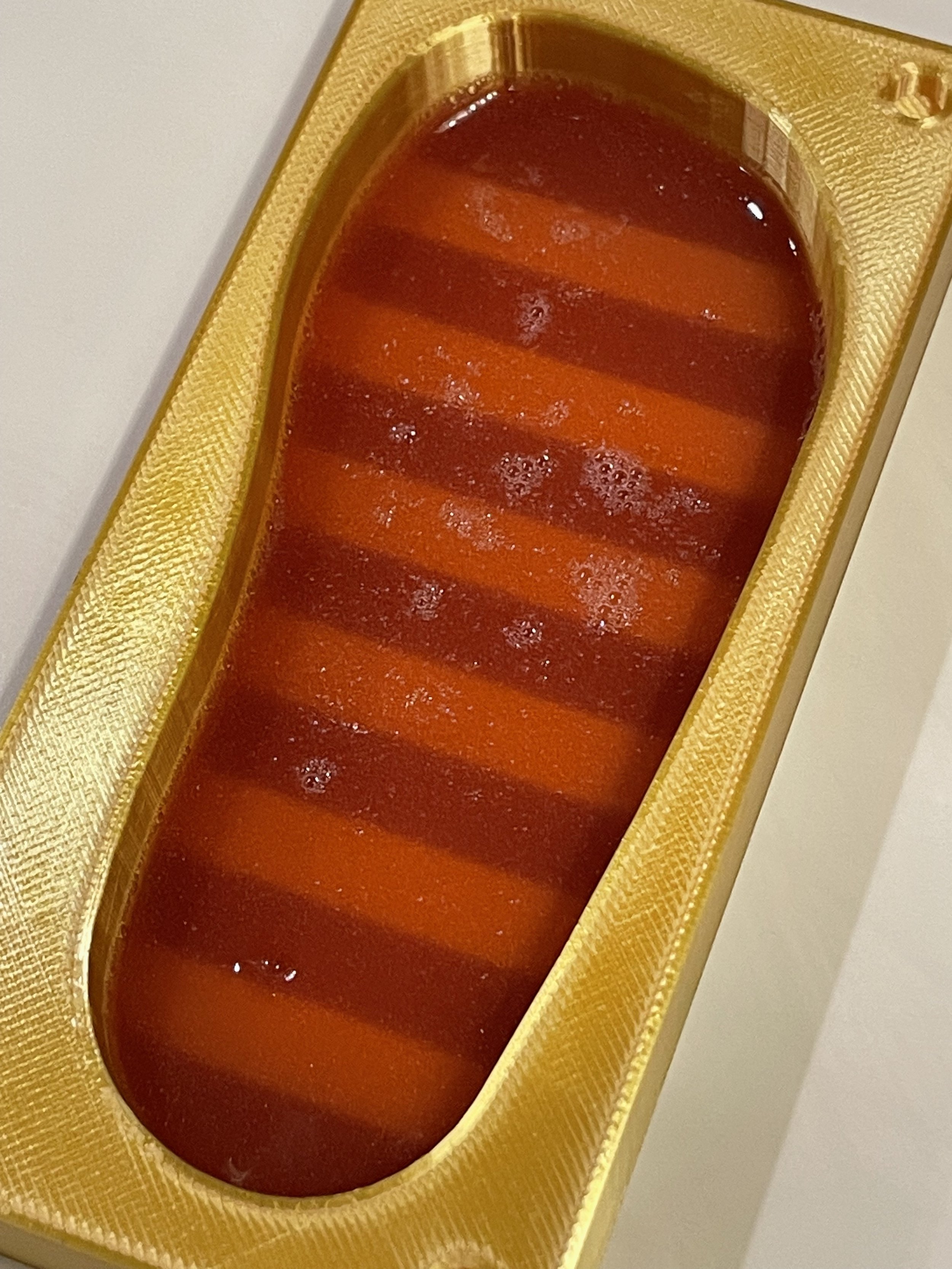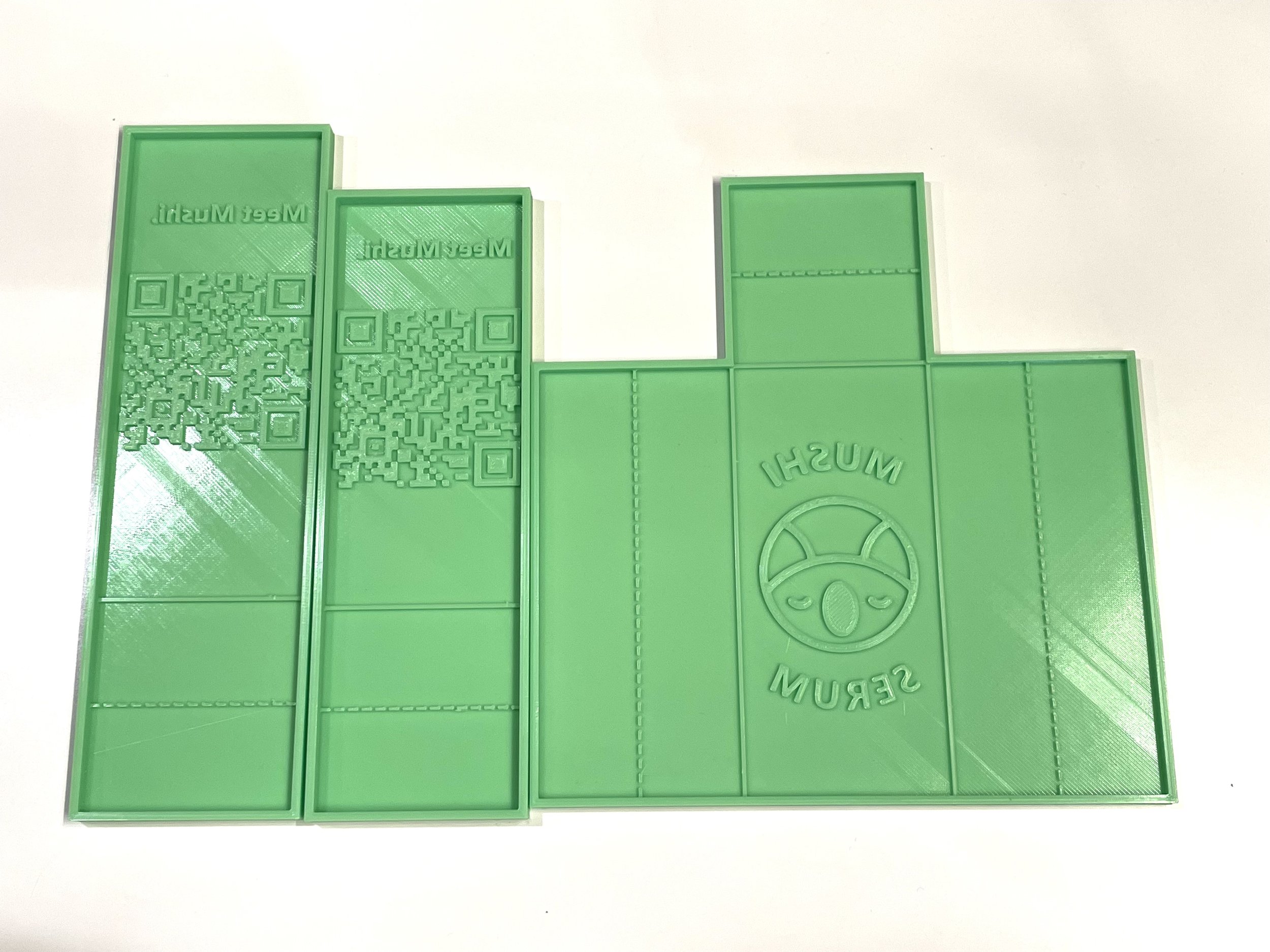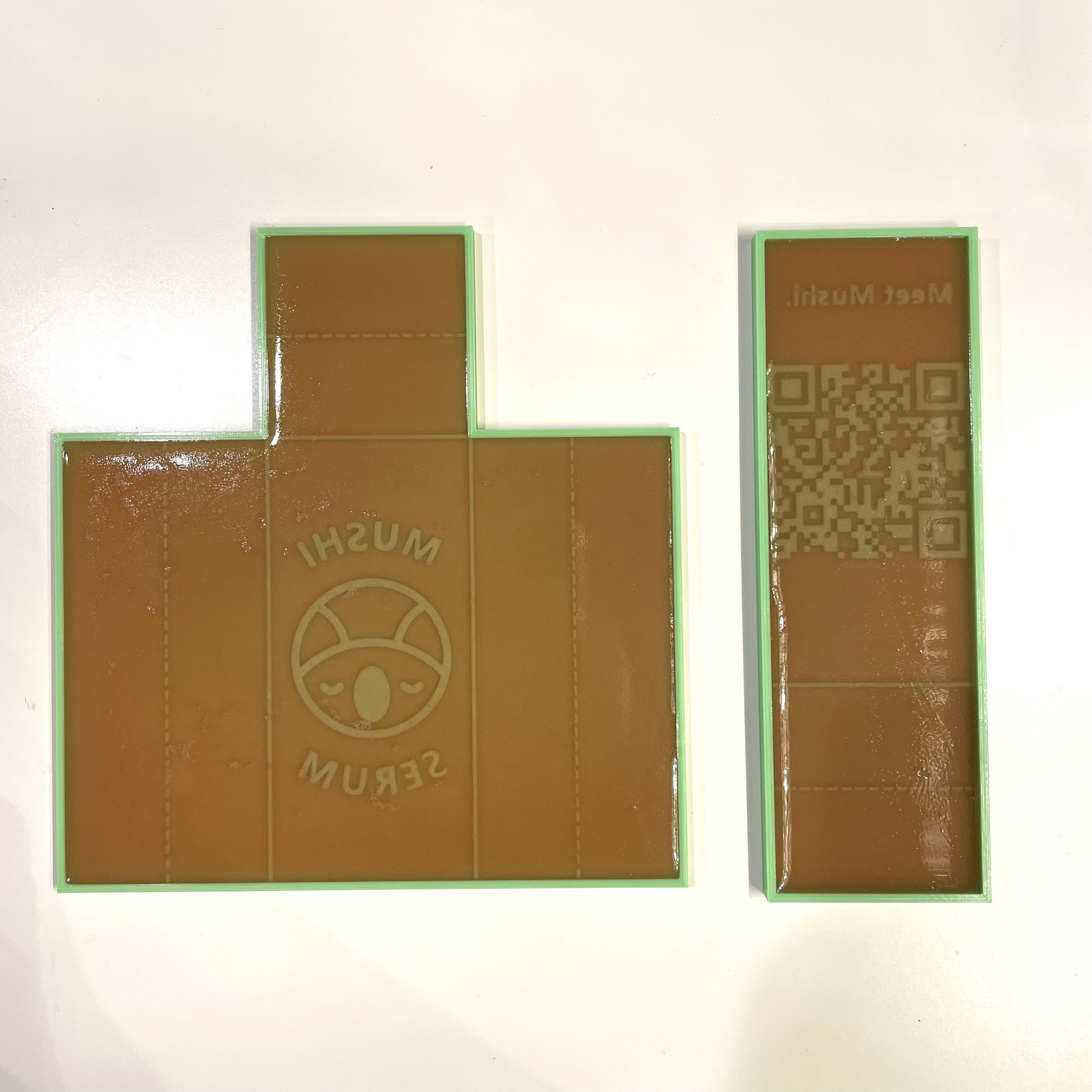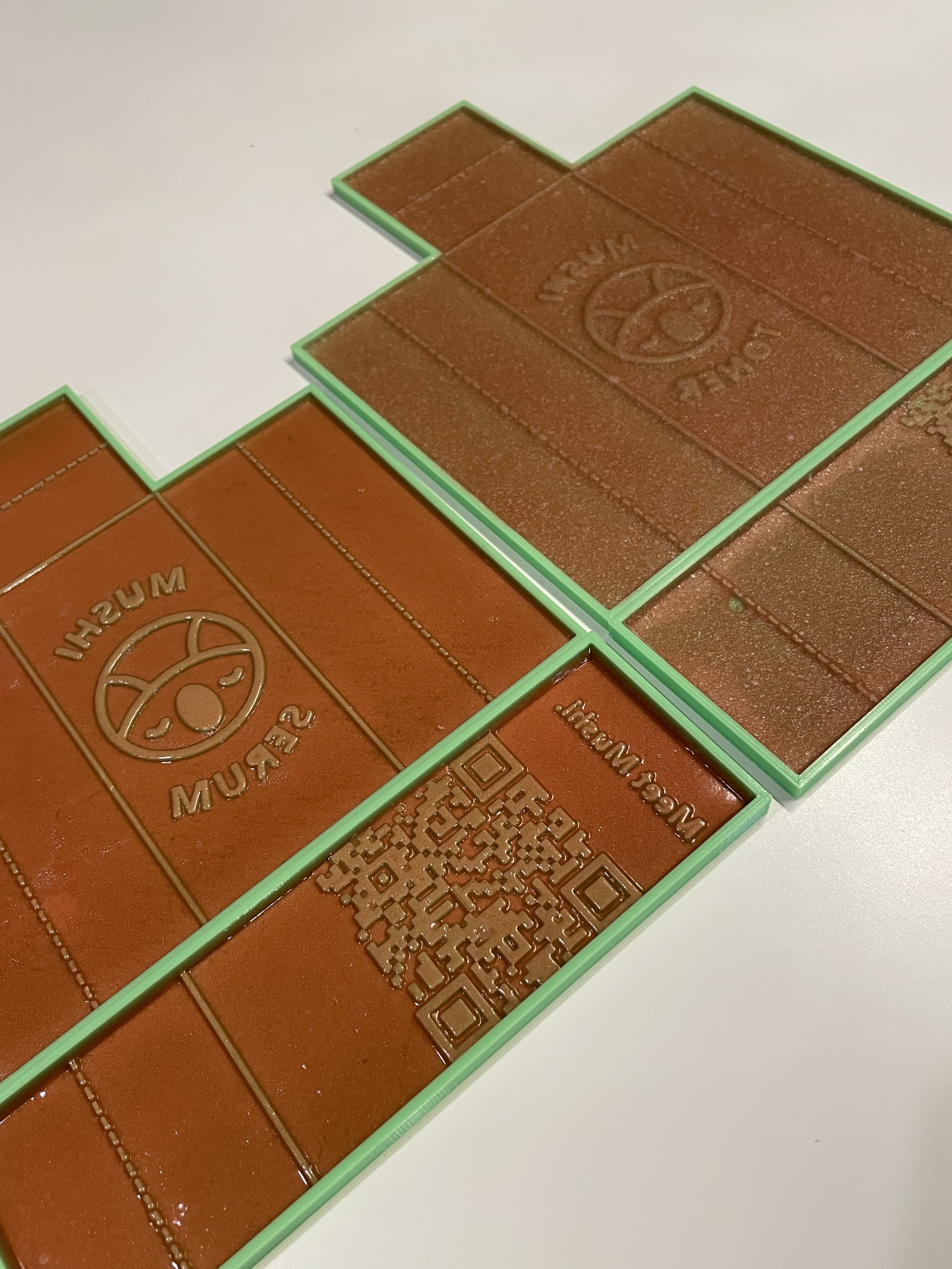#Prototyping
#Biomaterials
#Branding
#Packaging Design
#Cosmetics
#Sustainability
#Prototyping #Biomaterials #Branding #Packaging Design #Cosmetics #Sustainability
Biodegradable skincare packaging.
This six-week study sought to combine mycelium and bioplastic to create skincare packaging that is one hundred percent compostable and biodegradable.
Here is how it went:
Results:
Experiments and process:
Biodegradable Mycelium and Bioplastic Skincare Packaging
Jasmine Xu
ID-20ST-02: Biodesign
Peter Yeadon, Jennifer Bissonnette
This study seeks to combine mycelium and bioplastic to create skincare packaging that is one hundred percent compostable and biodegradable. Current luxury skincare packaging can be excessive when it comes to plastic-coated paper and foam cushioning, as consumers equate excess to quality and luxury. This type of packaging usually is not properly recycled and/or goes directly into landfills. Though it is still impossible for present day biomaterials to replace the vessel that contains, and makes direct contact with the skincare product, the packaging that goes around that vessel is not limited by the same hygiene liabilities. Additionally, current day beauty and lifestyle trends favor natural, sustainable and cruelty free products, and having one hundred percent compostable packaging not only follows the trend, but has potential for longevity.
The goals of this six-week study include using only biodegradable materials to create the finished product (which includes pigment and adhesive), incorporating embossed text and perforated tear lines into the packaging, and creating different finishes of bioplastic that differentiate type of product. Mycelium is used as the base of the packaging, having a rectangular box form that is molded to hold the bottle of product comfortably. The mold is 3D printed as well as the faux products that are encased by the packaging prototype. The exterior component that holds the color and design of the packaging is bioplastic. A difference in order of operations and heating time affected the finish of the bioplastic. The molds for the bioplastic were also 3D printed, modeled with debossed text and logos to create embossed designs in the final product. The use of edible luster dust gave the bioplastic a shimmery pink look. Wheat paste was used as an adhesive to assemble the packaging.
Some challenges surrounding bioplastic emerged during the study. What was supposed to be bioplastic with a glossy finish turned out to have a layer of white, powdery substance that seems to be potato starch that sank to the bottom of the mold. Fortunately, the matte variation was successful and had an even finish. Furthermore, while the embossed design was overall legible, there was a lack of precision due to air bubbles, and the design had to be enhanced with potato starch, which acted as a pigment to create contrast. The perforated line was difficult to start to rip, but it tore along the line rather smoothly after the initial tear. While there were some challenges, this study is a substantial start to perfecting viable compostable and biodegradable luxury skincare packaging.

